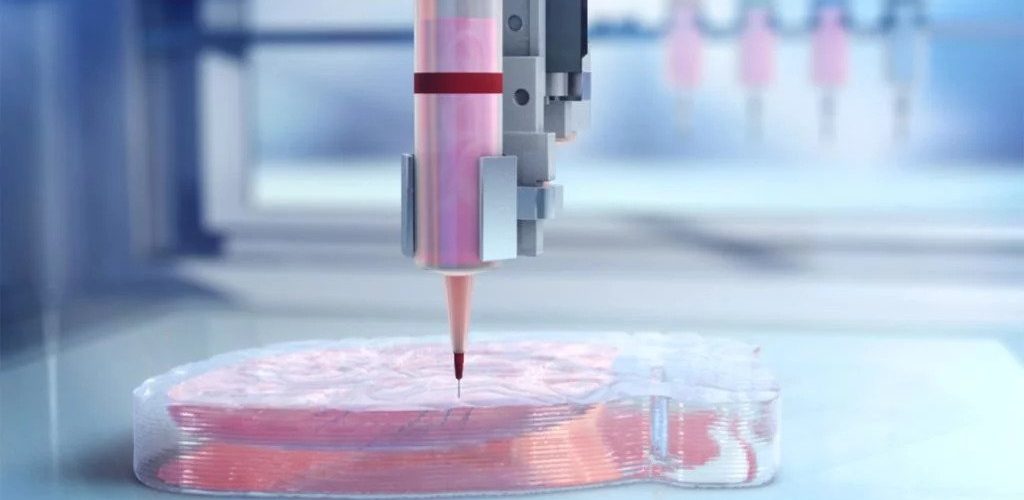by Karma Lei Angelo
Super soldier
Derek sits down across from the recruiter. He stares up at the holographic image of a BES, a bio-enhanced soldier.
“Tell me what brings you here,” the uniformed man says from the other side of the table.
“The civil war, sir. It’s getting closer to my grid. My little sister’s scared.”
“She should be. The Faction uses dirty tactics to eliminate anyone they deem an enemy, including the Neutralists.” The recruiter looks at the hologram, then back to Derek. “You do understand this is not one of history’s wars? That this modern enemy requires advanced solutions to eradicate?”
“Yes, sir.”
“Good.” The recruiter passes a tablet over to Derek. “Once you commit to becoming a BES, there’s no going back, son. We can’t reverse bio-engineer your muscles or remove the bio-fabricated bone. Your body will undergo permanent changes.”
Derek nods. He starts scrolling through the contract. “Do I have to make up my mind right now?”
“That’s up to you. Understand that the enemy out there doesn’t stop, won’t slow down their push to take over the next sector. The bio-fab process only takes a few days, then you’ll be in training for another 8 weeks. After that, you’ll be an official BES on the frontlines. And you will be unstoppable.”
The young man continues to read through the legal paperwork. He looks up at the hologram again. His mother warned him about the risks of joining the Infantry. This is the same government coalition which denied his father a new bioprinted pancreas after the cancer diagnosis. This same government which regulates all health care is now making him an offer almost too good to be true. Who wouldn’t want to be a super soldier, nearly invincible in combat?
Derek sits back, deep in thought over the whole biofabrication process. Should he go back home, safe from risk or judgement, heeding his mother’s warning? Or should he proceed with the permanent changes, knowing this is the same government that denied his father treatment?
What is biofabrication?
According to Physics World, biofabrication is defined as: “The automated generation of biologically functional products with structural organization from living cells, bioactive molecules, biomaterials, cell aggregates such as micro-tissues, or hybrid cell-material constructs, through bioprinting or bioassembly and subsequent tissue maturation processes.”
In other words, it is a way to grow or replicate biological products. These can also be bioprinted using a 3d printer and bioinks, a printable material that contains living cells. The process can be used for tissue engineering and regenerative medicine, architecture, and even the fashion industry.
The concept of biofabrication began in the early 2000s. Known as the “grandfather of bioprinting”, Thomas Boland, a bioengineer with the University of Texas at El Paso, used an HP inkjet printer to print a bioink made from living bovine cells. Boland concluded that if an inkjet could print genes, the same devices could print other biomaterials. Afterall, human cells are roughly the size of standard ink droplets.
Boland took the ink cartridge out of an old printer and filled it with collagen. He glued a thin sheet of silicon onto a piece of paper and fed it through the printer. Using a word program, he printed out his initials “TB” on the black silicon sheet. When the printer ejected the paper, the initials were clearly marked with the off-white proteins.
Since then, scientists have expanded their research on 3d printing, bioprinting, and fabrication processes. Some examples of developed and research products include:
- Blood vessels and tubes that deliver nutrients to other organs
- Artificial corneas created with synthetic polymers and recombinant collagen
- Cartilage tissue created by biopens using stem cells to treat osteoarthritis and cartilage injuries
- Skin, either in situ or in vitro, can be reconstructed directly on burn victims
- More complex organs such as lungs and kidneys are being researched and developed
As biofabricated and tissue-engineered products become more of a reality, medical and healthcare systems are beginning to take notice. In 2016, the Queensland University of Technology and Metro North Hospital and Health Service partnered to form the Herston Biofabrication Institute (HBI) in Australia, becoming the first medical facility in the world dedicated to 3D scanning, modeling, and printing of human tissue, bone, and cartilage.
The state-of-the-art facility will focus on developing bioengineered tissues and constructs, including the integration of bionics and biomechanical devices. For example, a child born with microtia (a deformity of the outer ear) could undergo a 3d scan of the problem area, then have a polymer composite of a prosthetic ear created. The temporary prosthetic could be attached with surgical adhesives or magnets until the child is older or able to have a more permanent treatment available.
HBI opened in early 2020 and will set the precedent for similar facilities to open around the world. The facility will also provide education and training for scientists and doctors around the world with the goal to become a scientific hub for future biotechnologies.
What are the consequences?
While this is still an emerging and mostly promising technology, there are concerns that biofabrication could be misused. Perhaps the biggest concern is government control and creating super soldiers. Human performance enhancement (HPE) research could look into the applications of bioprinting technology.
Not only could wounded soldiers have organs and body parts replaced through biofabrication, but what if healthy soldiers could have healthy organs and limbs augmented to improve performance? Imagine a soldier with a hardened epidermal shell more resistant to cuts, with skin that can mend exponentially faster than normal and tissue more resistant to infection. Or what about augmented muscle capable of doubling or tripling current strength thresholds and bone reinforced like the Marvel superhero Wolverine?
In addition, there are ethical concerns that not everyone will be allowed access to this technology. Governments could try to take control and limit access to people waiting for organ transplants. The rich could try to monopolize or prioritize access to bioprinted products for themselves. Some scientists are worried that bioengineered tissue could have latent diseases or the host body could reject the material, causing more harm than good. Legalities would need to be established to ensure the safety and health of the patients.
Saving time, money and lives
Biofabricating and bioengineering organs can also have a positive economical and social impact on modern societies. Currently and on average, waiting for an organ transplant takes around 3 to 5 years. As of March 2020, there are more than 112,000 people of all ages on the national transplant waiting list and roughly 20 people die each day waiting on that list. More people wait on the list than there are organs available from donors.
Not only could wait times be drastically reduced, the replication process could slow the global illicit trade of organ trafficking. It is unknown how many people are murdered around the world each year just for organ trafficking. Black market body parts are a lucrative business with organs such as hearts fetching more than $130,000 and corneas can cost as much as $30,000.
Lab-grown organs, on the other hand, could eliminate the need for desperate hospitals to find body parts and could save medical facilities billions per year. According to Forbes, a typical kidney transplant costs an average of $330,000 and a bioprinted kidney could cost a mere fraction of that, around $10,000. This savings could be passed to insurance companies and patients already struggling financially.
As the world’s first bioprinting facility, the Herston Biofabrication Institute has potential to achieve these goals and hopes to bring together doctors and engineers. There is also hope that, within the next decade, biofabrication will become a standard in health care practices and usher in a new appreciation of bioprinting.





